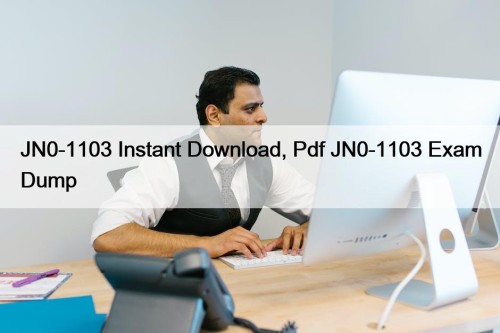Most Popular
 JN0-1103 Instant Download, Pdf JN0-1103 Exam Dump
JN0-1103 Instant Download, Pdf JN0-1103 Exam Dump
The quality of our Juniper JN0-1103 training material is excellent. ...
 Use Real WGU Scripting-and-Programming-Foundations Dumps PDF To Get Success
Use Real WGU Scripting-and-Programming-Foundations Dumps PDF To Get Success
BONUS!!! Download part of PrepPDF Scripting-and-Programming-Foundations dumps for free: https://drive.google.com/open?id=1sSKSJONbahc6MllRR5YY86S_4cxu7D1vWe ...
 100% Pass Quiz 2025 Fantastic Oracle 1Z1-922 Valid Test Pattern
100% Pass Quiz 2025 Fantastic Oracle 1Z1-922 Valid Test Pattern
Owing to our high-quality 1Z1-922 real dump sand high passing ...



Latest XDR-Engineer Test Pass4sure & Test XDR-Engineer Centres

In a year after your payment, we will inform you that when the XDR-Engineer exam guide should be updated and send you the latest version. Our company has established a long-term partnership with those who have purchased our XDR-Engineer exam questions. We have made all efforts to update our products in order to help you deal with any change, making you confidently take part in the XDR-Engineer Exam. Every day they are on duty to check for updates of XDR-Engineer study materials for providing timely application. We also welcome the suggestions from our customers, as long as our clients propose rationally.
Palo Alto Networks XDR-Engineer Exam Syllabus Topics:
| Topic | Details |
|---|---|
| Topic 1 |
|
| Topic 2 |
|
| Topic 3 |
|
| Topic 4 |
|
| Topic 5 |
|
>> Latest XDR-Engineer Test Pass4sure <<
Best XDR-Engineer : Palo Alto Networks XDR Engineer Exam Torrent Provide Three Versions for choosing
How far is the word from the deed? If you are a man of strong will, victory is at hand. Since you want to pass Palo Alto Networks XDR-Engineer Exam, you must get the Palo Alto Networks XDR-Engineer certification. ValidExam provide you with the latest certification training information and the most accurate tests answers. Real questions and answers can make your dream come true.
Palo Alto Networks XDR Engineer Sample Questions (Q45-Q50):
NEW QUESTION # 45
Which step is required to configure a proxy for an XDR Collector?
- A. Edit the YAML configuration file with the new proxy information
- B. Configure the proxy settings on the Cortex XDR tenant
- C. Connect the XDR Collector to the Pathfinder
- D. Restart the XDR Collector after configuring the proxy settings
Answer: A
Explanation:
TheXDR Collectorin Cortex XDR is a lightweight tool for collecting logs and events from servers and endpoints. When a proxy is required for the XDR Collector to communicate with the Cortex XDR cloud, the proxy settings must be configured in the collector's configuration file. Specifically, theYAML configuration file(e.g., config.yaml) must be edited to include the proxy details, such as the proxy server's address, port, and authentication credentials (if required).
* Correct Answer Analysis (A):To configure a proxy for the XDR Collector, the engineer mustedit the YAML configuration filewith the new proxy information. This involves adding or updating the proxy settings in the file, which the collector uses to route its traffic through the specified proxy server.
* Why not the other options?
* B. Restart the XDR Collector after configuring the proxy settings: While restarting the collector may be necessary to apply changes, it is not the primary step required to configure the proxy. The YAML file must be edited first.
* C. Connect the XDR Collector to the Pathfinder: The Pathfinder is a Cortex XDR feature for discovering endpoints, not for configuring proxy settings for the XDR Collector.
* D. Configure the proxy settings on the Cortex XDR tenant: Proxy settings for the XDR Collector are configured locally on the collector, not in the Cortex XDR tenant's web interface.
Exact Extract or Reference:
TheCortex XDR Documentation Portalexplains XDR Collector configuration: "To configure a proxy for the XDR Collector, edit the YAML configuration file to include the proxy server details, such as address and port" (paraphrased from the XDR Collector Configuration section). TheEDU-260: Cortex XDR Prevention and Deploymentcourse covers XDR Collector setup, stating that"proxy settings are configured by editing the collector's YAML file" (paraphrased from course materials). ThePalo Alto Networks Certified XDR Engineer datasheetincludes "data ingestion and integration" as a key exam topic, encompassing XDR Collector configuration.
References:
Palo Alto Networks Cortex XDR Documentation Portal:https://docs-cortex.paloaltonetworks.com/ EDU-260: Cortex XDR Prevention and Deployment Course Objectives Palo Alto Networks Certified XDR Engineer Datasheet:https://www.paloaltonetworks.com/services/education
/certification#xdr-engineer
NEW QUESTION # 46
An XDR engineer is configuring an automation playbook to respond to high-severity malware alerts by automatically isolating the affected endpoint and notifying the security team via email. The playbook should only trigger for alerts generated by the Cortex XDR analytics engine, not custom BIOCs. Which two conditions should the engineer include in the playbook trigger to meet these requirements? (Choose two.)
- A. Alert severity is High
- B. Alert category is Malware
- C. Alert source is Cortex XDR Analytics
- D. Alert status is New
Answer: A,B
Explanation:
In Cortex XDR,automation playbooks(also referred to as response actions or automation rules) allow engineers to define automated responses to specific alerts based on trigger conditions. The playbook in this scenario needs to isolate endpoints and send email notifications for high-severity malware alerts generated by the Cortex XDR analytics engine, excluding custom BIOC alerts. To achieve this, the engineer must configure the playbook trigger with conditions that match the alert's severity, category, and source.
* Correct Answer Analysis (A, C):
* A. Alert severity is High: The playbook should only trigger for high-severity alerts, as specified in the requirement. Setting the conditionAlert severity is Highensures that only alerts with a severity level of "High" activate the playbook, aligning with the engineer's goal.
* C. Alert category is Malware: The playbook targets malware alerts specifically. The condition Alert category is Malwareensures that the playbook only responds to alerts categorized as malware, excluding other types of alerts (e.g., lateral movement, exploit).
* Why not the other options?
* B. Alert source is Cortex XDR Analytics: While this condition would ensure the playbook triggers only for alerts from the Cortex XDR analytics engine (and not custom BIOCs), the requirement to exclude BIOCs is already implicitly met because BIOC alerts are typically categorized differently (e.g., as custom alerts or specific BIOC categories). The alert category (Malware) and severity (High) conditions are sufficient to target analytics-driven malware alerts, and adding the source condition is not strictly necessary for the stated requirements. However, if the engineer wanted to be more explicit, this condition could be considered, but the question asks for the two most critical conditions, which are severity and category.
* D. Alert status is New: The alert status (e.g., New, In Progress, Resolved) determines the investigation stage of the alert, but the requirement does not specify that the playbook should only trigger for new alerts. Alerts with a status of "InProgress" could still be high-severity malware alerts requiring isolation, so this condition is not necessary.
Additional Note on Alert Source: The requirement to exclude custom BIOCs and focus on Cortex XDR analytics alerts is addressed by theAlert category is Malwarecondition, as analytics-driven malware alerts (e.
g., from WildFire or behavioral analytics) are categorized as "Malware," while BIOC alerts are often tagged differently (e.g., as custom rules). If the question emphasized the need to explicitly filter by source, option B would be relevant, but the primary conditions for the playbook are severity and category.
Exact Extract or Reference:
TheCortex XDR Documentation Portalexplains automation playbook triggers: "Playbook triggers can be configured with conditions such as alert severity (e.g., High) and alert category (e.g., Malware) to automate responses like endpoint isolation and email notifications" (paraphrased from the Automation Rules section).
TheEDU-262: Cortex XDR Investigation and Responsecourse covers playbook creation, stating that
"conditions like alert severity and category ensure playbooks target specific alert types, such as high-severity malware alerts from analytics" (paraphrased from course materials). ThePalo Alto Networks Certified XDR Engineer datasheetincludes "playbook creation and automation" as a key exam topic, encompassing trigger condition configuration.
References:
Palo Alto Networks Cortex XDR Documentation Portal:https://docs-cortex.paloaltonetworks.com/ EDU-262: Cortex XDR Investigation and Response Course Objectives Palo Alto Networks Certified XDR Engineer Datasheet:https://www.paloaltonetworks.com/services/education
/certification#xdr-engineer
NEW QUESTION # 47
An XDR engineer is creating a correlation rule to monitor login activity on specific systems. When the activity is identified, an alert is created. The alerts are being generated properly but are missing the username when viewed. How can the username information be included in the alerts?
- A. Select "Initial Access" in the MITRE ATT&CK mapping to include the username
- B. Update the query in the correlation rule to include the username field
- C. Add a mapping for the username field in the alert fields mapping
- D. Add a drill-down query to the alert which pulls the username field
Answer: C
Explanation:
In Cortex XDR,correlation rulesare used to detect specific patterns or behaviors (e.g., login activity) by analyzing ingested data and generating alerts when conditions are met. For an alert to include specific fields likeusername, the field must be explicitly mapped in thealert fields mappingconfiguration of the correlation rule. This mapping determines which fields from theunderlying dataset are included in the generated alert's details.
In this scenario, the correlation rule is correctly generating alerts for login activity, but theusernamefield is missing. This indicates that the correlation rule's query may be identifying the relevant events, but the usernamefield is not included in the alert's output fields. To resolve this, the engineer must update thealert fields mappingin the correlation rule to explicitly include theusernamefield, ensuring it appears in the alert details when viewed.
* Correct Answer Analysis (C):Adding a mapping for theusernamefield in thealert fields mapping ensures that the field is extracted from the dataset and included in the alert's metadata. This is done in the correlation rule configuration, where administrators can specify which fields to include in the alert output.
* Why not the other options?
* A. Select "Initial Access" in the MITRE ATT&CK mapping to include the username:
Mapping to a MITRE ATT&CK technique like "Initial Access" defines the type of attack or behavior, not specific fields likeusername. This does not address the missing field issue.
* B. Update the query in the correlation rule to include the username field: While the correlation rule's query must reference theusernamefield to detect relevant events, including it in the query alone does not ensure it appears in the alert's output. Thealert fields mappingis still required.
* D. Add a drill-down query to the alert which pulls the username field: Drill-down queries are used for additional investigation after an alert is generated, not for including fields in the alert itself. This does not solve the issue of missingusernamein the alert details.
Exact Extract or Reference:
TheCortex XDR Documentation Portaldescribes correlation rule configuration: "To include specific fields in generated alerts, configure the alert fields mapping in the correlation rule to map dataset fields, such as username, to the alert output" (paraphrased from the Correlation Rules section). TheEDU-262: Cortex XDR Investigation and Responsecourse covers detection engineering, stating that "alert fields mapping determines which data fields are included in alerts generated by correlation rules" (paraphrased from course materials). ThePalo Alto Networks Certified XDR Engineer datasheetincludes "detection engineering" as a key exam topic, encompassing correlation rule configuration.
References:
Palo Alto Networks Cortex XDR Documentation Portal:https://docs-cortex.paloaltonetworks.com/ EDU-262: Cortex XDR Investigation and Response Course Objectives Palo Alto Networks Certified XDR Engineer Datasheet:https://www.paloaltonetworks.com/services/education
/certification#xdr-engineer
NEW QUESTION # 48
Based on the image of a validated false positive alert below, which action is recommended for resolution?
- A. Create an exception for OUTLOOK.EXE for ROP Mitigation Module
- B. Create an alert exclusion for OUTLOOK.EXE
- C. Disable an action to the CGO Process DWWIN.EXE
- D. Create an exception for the CGO DWWIN.EXE for ROP Mitigation Module
Answer: A
Explanation:
In Cortex XDR, a false positive alert involvingOUTLOOK.EXEtriggering aCGO (Codegen Operation)alert related toDWWIN.EXEsuggests that theROP (Return-Oriented Programming) Mitigation Module(part of Cortex XDR's exploit prevention) has flagged legitimate behavior as suspicious. ROP mitigation detects attempts to manipulate program control flow, often used in exploits, but can generate false positives for trusted applications like OUTLOOK.EXE. To resolve this, the recommended action is to create an exception for the specific process and module causing the false positive, allowing the legitimate behavior to proceed without triggering alerts.
* Correct Answer Analysis (D):Create an exception for OUTLOOK.EXE for ROP Mitigation Moduleis the recommended action. Since OUTLOOK.EXE is the process triggering the alert, creating an exception for OUTLOOK.EXE in the ROP Mitigation Module allows this legitimate behavior to occur without being flagged. This is done by adding OUTLOOK.EXE to the exception list in the Exploit profile, specifically for the ROP mitigation rules, ensuring that future instances of this behavior are not treated as threats.
* Why not the other options?
* A. Create an alert exclusion for OUTLOOK.EXE: While an alert exclusion can suppress alerts for OUTLOOK.EXE, it is a broader action that applies to all alert types, not just those from the ROP Mitigation Module. This could suppress other legitimate alerts for OUTLOOK.EXE, reducing visibility into potential threats. An exception in the ROP Mitigation Module is more targeted.
* B. Disable an action to the CGO Process DWWIN.EXE: Disabling actions for DWWIN.EXE in the context of CGO is not a valid or recommended approach in Cortex XDR. DWWIN.EXE (Dr. Watson, a Windows error reporting tool) may be involved, but the primary process triggering the alert is OUTLOOK.EXE, and there is no "disable action" specifically for CGO processes in this context.
* C. Create an exception for the CGO DWWIN.EXE for ROP Mitigation Module: While DWWIN.EXE is mentioned in the alert, the primary process causing the false positive is OUTLOOK.EXE, as it's the application initiating the behavior. Creating an exception for DWWIN.EXE would not address the root cause, as OUTLOOK.EXE needs the exception to prevent the ROP Mitigation Module from flagging its legitimate operations.
Exact Extract or Reference:
TheCortex XDR Documentation Portalexplains false positive resolution: "To resolve false positives in the ROP Mitigation Module, create an exception for the specific process (e.g., OUTLOOK.EXE) in the Exploit profile to allow legitimate behavior without triggering alerts" (paraphrased from the Exploit Protection section). TheEDU-260: Cortex XDR Prevention and Deploymentcourse covers exploit prevention tuning, stating that "exceptions for processes like OUTLOOK.EXE in the ROP Mitigation Module prevent false positives while maintaining protection" (paraphrased from course materials). ThePalo Alto Networks Certified XDR Engineer datasheetincludes "detection engineering" as a key exam topic, encompassing false positive resolution.
References:
Palo Alto Networks Cortex XDR Documentation Portal:https://docs-cortex.paloaltonetworks.com/ EDU-260: Cortex XDR Prevention and Deployment Course Objectives Palo Alto Networks Certified XDR Engineer Datasheet:https://www.paloaltonetworks.com/services/education
/certification#xdr-engineer
Note on Image: Since the image was not provided, I assumed a typical scenario where OUTLOOK.EXE triggers a false positive CGO alert related to DWWIN.EXE due to ROP mitigation. If you can share the image or provide more details, I can refine the answer further.
NEW QUESTION # 49
Using the Cortex XDR console, how can additional network access be allowed from a set of IP addresses to an isolated endpoint?
- A. Add entries in Response Actions section of Agent Settings profile
- B. Add entries in Configuration section of Security Settings
- C. Add entries in Exceptions Configuration section of Isolation Exceptions
- D. Add entries in the Allowed Domains section of Security Settings for the tenant
Answer: C
Explanation:
In Cortex XDR,endpoint isolationis a response action that restricts network communication to and from an endpoint, allowing only communication with the Cortex XDR management server to maintain agent functionality. To allow additional network access (e.g., from a set of IP addresses) to an isolated endpoint, administrators can configureisolation exceptionsto permit specific traffic while the endpoint remains isolated.
* Correct Answer Analysis (C):TheExceptions Configuration section of Isolation Exceptionsin the Cortex XDR console allows administrators to define exceptions for isolated endpoints, such as permitting network access from specific IP addresses. This ensures that the isolated endpoint can communicate with designated IPs (e.g., for IT support or backup servers) while maintaining isolation from other network traffic.
* Why not the other options?
* A. Add entries in Configuration section of Security Settings: The Security Settings section in the Cortex XDR console is used for general tenant-wide configurations (e.g., password policies), not for managing isolation exceptions.
* B. Add entries in the Allowed Domains section of Security Settings for the tenant: The Allowed Domains section is used to whitelist domains for specific purposes (e.g., agent communication), not for defining IP-based exceptions for isolated endpoints.
* D. Add entries in Response Actions section of Agent Settings profile: The Response Actions section in Agent Settings defines automated response actions (e.g., isolate on specific conditions), but it does not configure exceptions for already isolated endpoints.
Exact Extract or Reference:
TheCortex XDR Documentation Portalexplains isolation exceptions: "To allow specific network access to an isolated endpoint, add IP addresses or domains in the Exceptions Configuration section of Isolation Exceptions in the Cortex XDR console" (paraphrased from the Endpoint Isolation section). TheEDU-262:
Cortex XDR Investigation and Responsecourse covers isolation management, stating that "Isolation Exceptions allow administrators to permit network access from specific IPs to isolated endpoints" (paraphrased from course materials). ThePalo Alto Networks Certified XDR Engineer datasheetincludes
"post-deployment management and configuration" as a key exam topic, encompassing isolation exception configuration.
References:
Palo Alto Networks Cortex XDR Documentation Portal:https://docs-cortex.paloaltonetworks.com/ EDU-262: Cortex XDR Investigation and Response Course Objectives Palo Alto Networks Certified XDR Engineer Datasheet:https://www.paloaltonetworks.com/services/education
/certification#xdr-engineer
NEW QUESTION # 50
......
Our Palo Alto Networks practice materials compiled by the most professional experts can offer you with high quality and accuracy XDR-Engineer practice materials for your success. Up to now, we have more than tens of thousands of customers around the world supporting our Palo Alto Networks exam torrent. If you are unfamiliar with our XDR-Engineer Study Materials, please download the free demos for your reference, and to some unlearned exam candidates, you can master necessities by our Palo Alto Networks practice materials quickly.
Test XDR-Engineer Centres: https://www.validexam.com/XDR-Engineer-latest-dumps.html
- Reliable XDR-Engineer Dumps Pdf 🏝 XDR-Engineer New Questions 👮 Valid Test XDR-Engineer Braindumps 🕌 Enter ➡ www.examcollectionpass.com ️⬅️ and search for ⇛ XDR-Engineer ⇚ to download for free ☮XDR-Engineer Test Simulator Free
- Get Up to 365 Days of Free Updates Palo Alto Networks XDR-Engineer Questions and Free Demo 🦳 Search for ☀ XDR-Engineer ️☀️ and download exam materials for free through ✔ www.pdfvce.com ️✔️ 😈New XDR-Engineer Test Price
- Free PDF Quiz Palo Alto Networks - XDR-Engineer Updated Latest Test Pass4sure 🙉 Simply search for 「 XDR-Engineer 」 for free download on ▛ www.testkingpdf.com ▟ 🔳Accurate XDR-Engineer Test
- Valid XDR-Engineer Exam Testking 🍖 XDR-Engineer Updated Test Cram 🥀 Valid XDR-Engineer Exam Testking 🚉 Search for ➤ XDR-Engineer ⮘ and download it for free on ➽ www.pdfvce.com 🢪 website 🎭XDR-Engineer Exam Format
- XDR-Engineer Test Simulator Free ⚪ XDR-Engineer Exam Format ☑ XDR-Engineer Reliable Test Tutorial ➕ Go to website { www.testkingpdf.com } open and search for ➥ XDR-Engineer 🡄 to download for free 🍪New XDR-Engineer Test Discount
- Get Certified on the First Attempt with Palo Alto Networks XDR-Engineer Exam Dumps 🍶 Search on ➠ www.pdfvce.com 🠰 for ⇛ XDR-Engineer ⇚ to obtain exam materials for free download 🕟XDR-Engineer Reliable Test Tutorial
- Palo Alto Networks XDR-Engineer Exam Questions In PDF Format 🕛 Open website “ www.testkingpdf.com ” and search for ➥ XDR-Engineer 🡄 for free download 🍯Valid Test XDR-Engineer Braindumps
- XDR-Engineer Prep Guide 🌼 XDR-Engineer Exam Format 🅱 Test XDR-Engineer Cram 🦐 Easily obtain ▶ XDR-Engineer ◀ for free download through ⏩ www.pdfvce.com ⏪ 🦂XDR-Engineer Reliable Test Tutorial
- XDR-Engineer exam collection guarantee XDR-Engineer Palo Alto Networks XDR Engineer exam success ↘ The page for free download of ➽ XDR-Engineer 🢪 on ➡ www.testsimulate.com ️⬅️ will open immediately 🍇XDR-Engineer Reliable Test Tutorial
- Get Up to 365 Days of Free Updates Palo Alto Networks XDR-Engineer Questions and Free Demo 🍔 Enter ➽ www.pdfvce.com 🢪 and search for ➠ XDR-Engineer 🠰 to download for free 🎅Accurate XDR-Engineer Test
- Quiz XDR-Engineer - Palo Alto Networks XDR Engineer Authoritative Latest Test Pass4sure 🦕 The page for free download of ➥ XDR-Engineer 🡄 on ➠ www.examdiscuss.com 🠰 will open immediately 🕯New XDR-Engineer Test Price
- XDR-Engineer Exam Questions
- draft.genome-bio.com www.holisticwisdom.com.au lensluster.com mytlearnu.com bootcamp.ngodingdata.com kapoorclasses.com letsfocusweb.online benjamin-der-deutschlehrer.de dentistupgrade.com higherinstituteofbusiness.com
Tags: Latest XDR-Engineer Test Pass4sure, Test XDR-Engineer Centres, Training XDR-Engineer Pdf, XDR-Engineer Updated Demo, Simulated XDR-Engineer Test